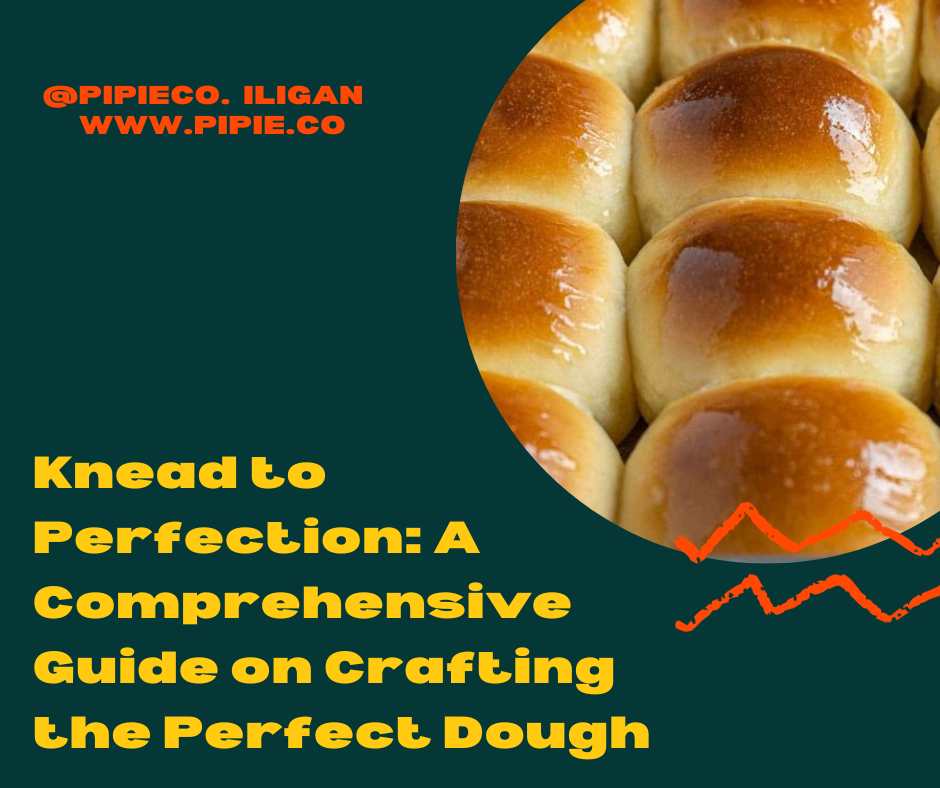The art of baking often begins with a fundamental element: the dough. Whether you’re creating bread, pastries, or pizza, mastering the technique of making the perfect dough is a skill that can elevate your culinary creations. In this comprehensive guide, we’ll delve into the science and artistry of crafting flawless dough, exploring the key ingredients, techniques, and tips that will have you kneading and rising to new heights in your baking endeavors.
1. Choose the Right Flour
The foundation of perfect dough starts with selecting the right flour. Different types of flour contain varying levels of protein, affecting the texture of the dough. For bread, opt for high-protein bread flour, while all-purpose flour works well for versatile dough like pizza or pastry. Experiment with whole wheat flour for a nuttier flavor and added nutritional benefits.
2. Precise Measurements Matter
Baking, especially when it comes to dough, is a science. Accurate measurements are crucial for achieving the desired texture and consistency. Invest in quality measuring tools, and follow recipes meticulously to ensure your dough is neither too dry nor too sticky.
3. Balancing Wet and Dry Ingredients
Achieving the perfect dough requires a delicate balance between wet and dry ingredients. Gradually incorporate liquids into the dry mixture, allowing the flour to absorb moisture evenly. Adjust consistency as needed, adding flour or liquid in small increments until you reach the desired texture.
4. The Power of Yeast
Yeast is the magic ingredient that brings dough to life, creating that coveted rise. Activate your yeast by dissolving it in warm water with a pinch of sugar. Allow it to sit until it becomes frothy. Fresh and active yeast ensures a robust fermentation process, resulting in light, airy dough.
5. Patience in the Rising Process
Allowing the dough to rise is where patience becomes a virtue. Whether it’s a single rise or a double rise, follow the recipe instructions diligently. Find a warm, draft-free place for your dough to expand, and resist the urge to rush this crucial step. The reward is a light and airy texture.
6. Perfecting the Kneading Technique
Kneading is an art that develops gluten, contributing to the structure of the dough. Use a rhythmic motion, folding the dough over onto itself, and exert consistent pressure with the heels of your hands. The dough should be elastic and smooth, indicating proper gluten development.
7. Don’t Overwork the Dough
While kneading is crucial, overworking the dough can have adverse effects. Too much kneading can result in a tough texture. Once your dough reaches the desired consistency, stop kneading. Trust the process, and let the dough rest as needed to relax the gluten.
8. Temperature Control
Temperature plays a significant role in dough development. Use room temperature ingredients, and be mindful of the ambient temperature of your kitchen. Cold environments slow down fermentation, while warmer conditions can expedite the process. Find a balance that suits the type of dough you’re creating.
9. Quality Fats Add Flavor
Incorporating quality fats, such as butter or olive oil, adds flavor and contributes to the texture of the dough. Experiment with different fats to enhance the taste and achieve the desired richness in your baked goods.
10. Practice Makes Perfect
Becoming a master of dough-making is a journey of practice and experimentation. Embrace the learning process, try different recipes, and pay attention to the nuances of each batch. With time, you’ll develop an intuitive feel for the perfect dough consistency.
Crafting the perfect dough is a culinary endeavor that blends precision with creativity. By understanding the science behind each ingredient, honing your kneading technique, and embracing the artistry of fermentation, you’ll be well on your way to creating dough that forms the foundation for delectable baked delights. So, roll up your sleeves, flour your workspace, and embark on the delicious journey of perfecting your dough-making skills. Happy baking!







